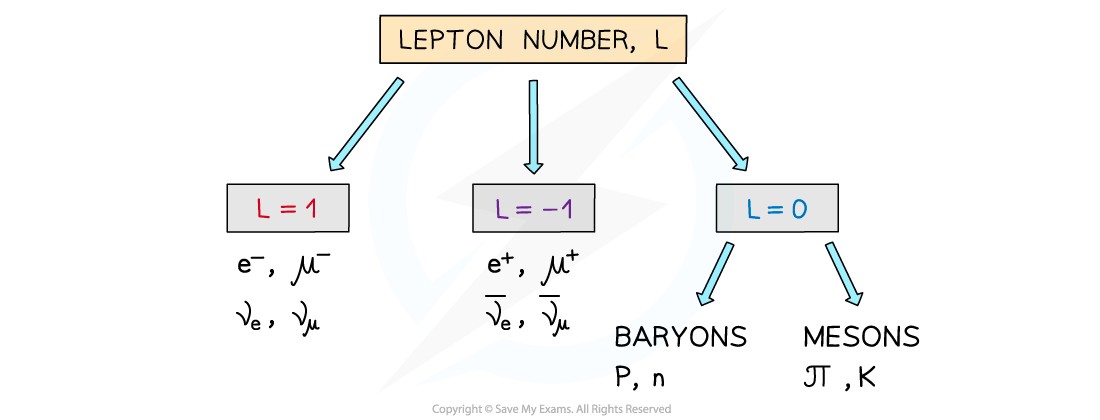Conservation Laws in Particle Physics (Edexcel A Level Physics) : Revision Note
Applying Conservation Laws
When particles interact, they must obey a set of laws associated to the type of particles involved
These laws are governed by numbers called quantum numbers
Quantum numbers that are always conserved (i.e., they are the same before and after an interaction) are:
Charge, Q
Baryon number, B
Lepton number, L
Using these quantum numbers, physicists are able to determine whether certain interactions are possible or not
In other words, an interaction that does not conserve charge, baryon or lepton number is not allowed by the laws of physics
Conservation of Charge
The charge of a particle Q, is the charge carried by that particle
Protons have a charge Q = +1
Electrons have a charge Q = –1
Up quarks have a charge Q = +2/3
Neutral particles, like photons and neutrinos, have a charge Q = 0
Conservation of Baryon Number
The baryon number, B, is the number of baryons in an interaction
B depends on whether the particle is a baryon, anti-baryon or neither
Baryons have a baryon number B = +1
Anti-baryons have a baryon number B = –1
Particles that are not baryons have a baryon number B = 0

The baryon number of a particle depends if it is a baryon, anti–baryon or neither
The up (u), down (d) and strange (s) quark have a baryon number of 1/3 each
This means that the anti–up, anti–down and anti–strange quarks have a baryon number of –1/3 each
Note: The baryon number of each quark is provided on the datasheet
The implication of this is that baryons are made up of all quarks and anti-baryons are made up of all anti-quarks
There are no baryons (yet) that have a combination of quarks and anti-quarks e.g. up, anti-down, down
The reason being that this would equate to a baryon number that is not a whole number (integer)
Conservation of Lepton Number
Similar to baryon number, the lepton number, L is the number of leptons in an interaction
L depends on whether the particle is a lepton, anti-lepton or neither
Leptons have a lepton number L = +1
Anti-leptons have a lepton number L = –1
Particles that are not leptons have a lepton number L = 0
Lepton number is a quantum number and is conserved in all interactions
This is helpful for knowing whether an interaction is able to happen

The lepton number depends on if the particle is a lepton, anti-lepton, or neither
Worked Example
Show that baryon number is conserved in β– decay.
Answer:

Worked Example
If the lepton number is conserved in the following decay, identify whether particle X should be a neutrino or anti-neutrino

Answer:
Step 1: Determine the lepton number of all the particles on both sides of the equation
0 + (–1) = 0 + X
Step 2: Identify the lepton number of X
If the lepton number must be conserved, X must also have a lepton number of –1
Step 3: State the identity of particle X
Particle X is an anti-neutrino
Examiner Tips and Tricks
Identifying the charge, baryon number or lepton number of an unknown particle can be some of the easiest questions if the correct values for each particle are memorised! The most common mistake is thinking that the electron has a lepton number of –1 because it's charge is negative, it has a lepton number of +1 and it's the positron that has a lepton number of -1.

You've read 0 of your 5 free revision notes this week
Sign up now. It’s free!
Did this page help you?
